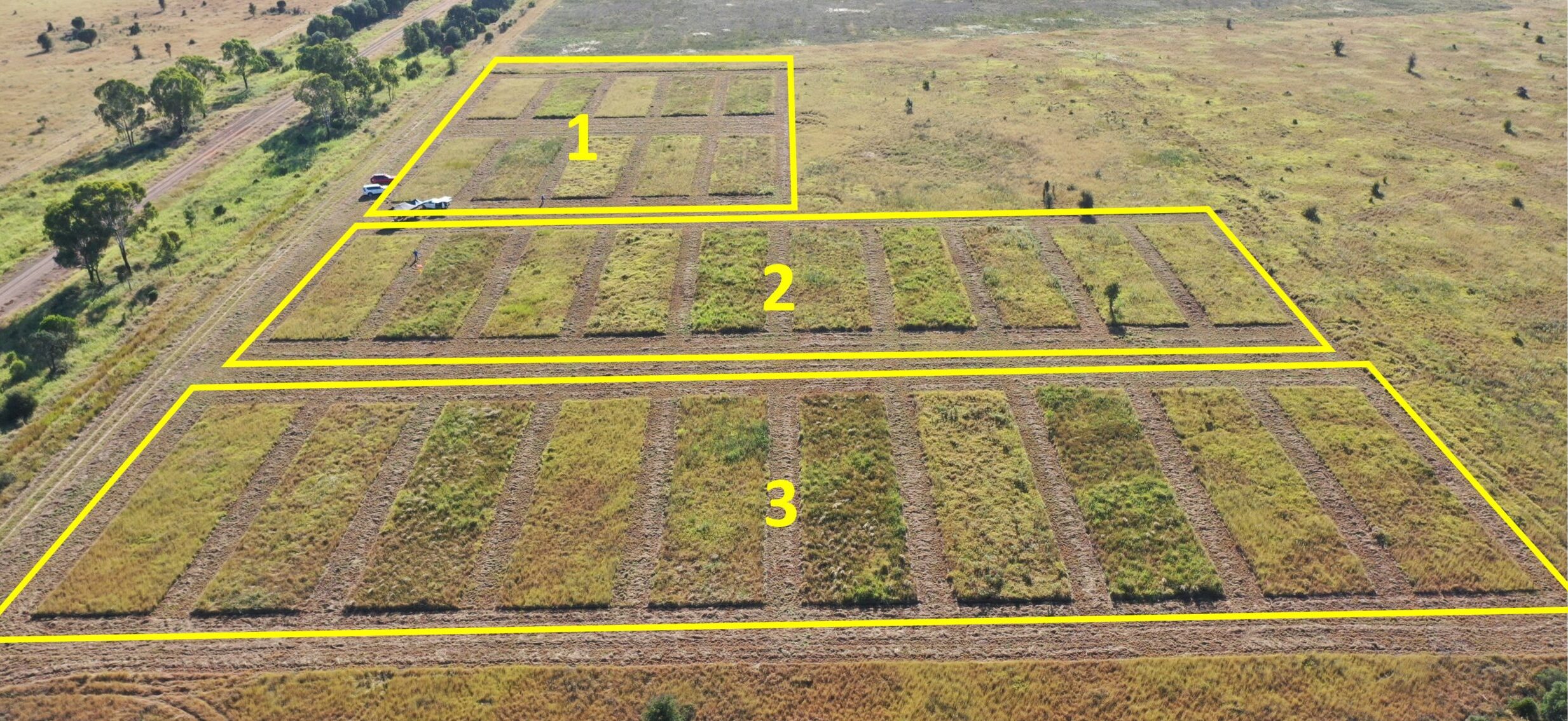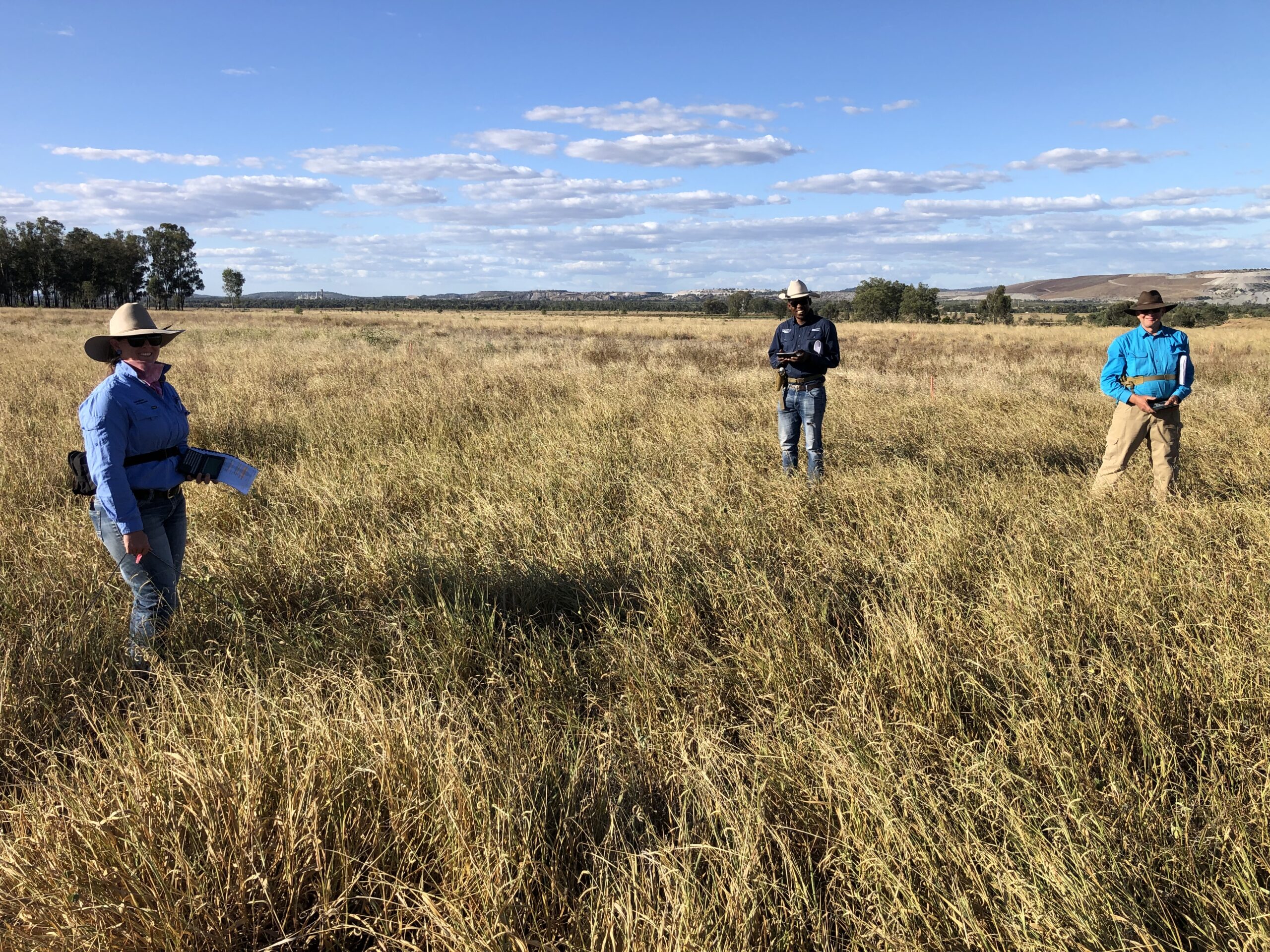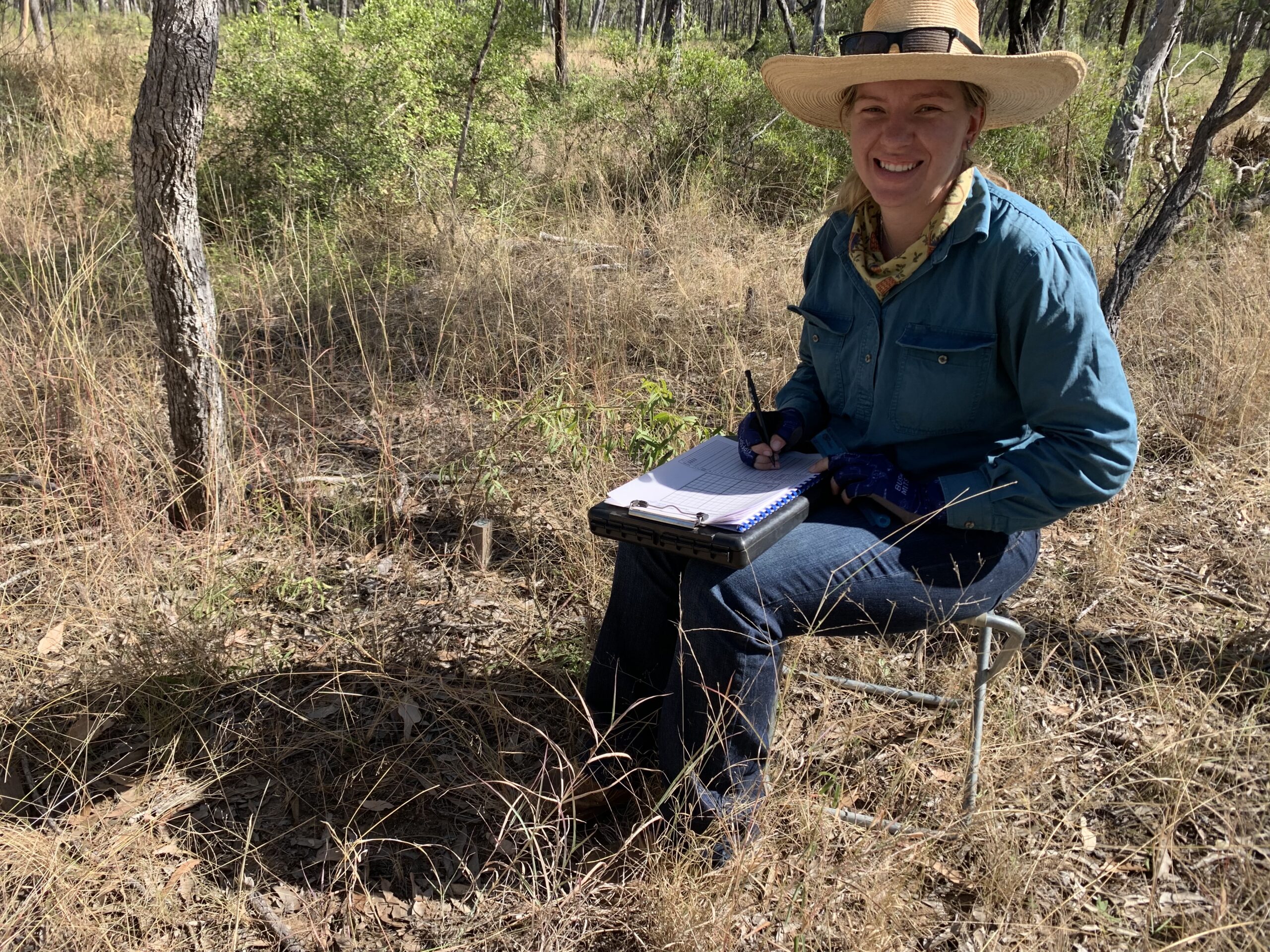I would walk 500 miles…
It’s easy to keep your steps up if you are part of the Department of Agriculture and Fisheries pasture team! The first part of the year is busy with not only planting new trial sites but measuring existing ones. We know being out in the paddock can make us hard to get in touch with sometimes, so we thought we’d take this opportunity to explain how we do our pasture research so that our findings are meaningful to you.
A network of sites and people
The Queensland Pasture Resilience Program (QPRP) encompasses four projects that have a network of trial sites across the state. Our teams are made up of pasture scientists, agronomists, extension officers and technical officers who are all involved in collecting and presenting data – the equivalent of 17 full time staff in total! From January to May this year, our team has visited 27 trial sites travelling over 27,000 km. They have assessed over 20,000 quadrats and cut over 2,000 samples. In total they have had 196 nights away from home.
Experimental design
Research trials need to be designed and laid out in a specific way to ensure the data collected can be statistically analysed. This provides scientific rigour for confidence in interpreting the data and understanding the outcomes. Our pasture scientists use biometricians to help with this. Biometricians are biological statisticians who specialise in trial design and analysis of field trials and applied research.
Randomisation and replication of treatments
Randomisation refers to how the treatments are arranged in the trial area. Treatments can’t be placed side-by-side more than once or located in the same order multiple times. Buffer zones between treatments reduce the chance that one treatment affects or interacts with another. Replicating treatments helps to account for natural variation (e.g. soil changes) across the trial area to provide confidence that differences are due to the treatment and not another factor.

Timing of sampling
The first half of the year is our busy time for sampling! Most tropical and subtropical pasture research relies on understanding how much pasture grows in the growing season i.e. the wet summer months. Tropical pastures stop growing when moisture declines and the average daily temperature falls below 14ᵒC. The end of the growing season differs between Northern and Southern Queensland, but generally occurs between March and June. Some trial sites require measurements at the start of the growing season or before the season break, so these are done in approximately October to December. This is why you often find us out in the paddock for weeks on end making sure we collect data we need before the pasture stops, or starts growing again.
Sampling and assessment techniques
There are several ways we can measure and sample pasture trials. The type of data needed, available labour and trial environment determines which techniques are used.
BOTANAL
The BOTANAL process is used to assess pasture yield and composition. It is done with teams of people who are trained to accurately assess pasture dry matter (in kg/ha) and identify grasses, legumes and herbs. Every team member has a 0.5 x 0.5m wire square (called a quadrat) that is placed on the ground at regular intervals. The biomass, the name and proportion of each species present is assessed. Often, we assess several hundred or thousands of quadrats across a trial site in a few days. This means there is lots of data to go into the statistical analyses which increases the accuracy of the findings. Every person doing the assessments is calibrated with samples that are harvested and weighed. We are pretty proud to say that the team members doing BOTANALs have an average accuracy of 90% over many thousands of assessments!

Quadrat cuts or harvesting
Treatment plots can also be manually harvested with a tractor implement or cut by hand with shears or secateurs. These samples are dried in an oven and weighed once all moisture is removed. A benefit of this method is that the sample can be sorted into species or plant parts if needed.

Charting
Charting is used in detailed, long term pasture studies where individual plants can be tracked across seasons and years. Permanent quadrats and plots are marked and the crown or basal area of individual plants are drawn on chart paper. This gives accurate assessments of the changing size of plants and the recruitment of seedlings or death of plants over time. Charting is used to understand the ecology of Desert bluegrass and its response to grazing and climate at the long term Wambiana Grazing Trial.

Permits
Undertaking research sometimes means applying agricultural chemicals (e.g. herbicides, insecticides or fungicides) that might not be registered or on permit issued by the Australian Pesticide and Veterinary Medicines Authority (APVMA). The APVMA allows the use of such products for research purposes through a special permit which describes allowable situations and what needs to be recorded. It is important to understand that off-label use of chemicals can be dangerous and must not be done unless approved to do so. The aim of research using these products is to be able to provide recommendations for industry around their effectiveness.
The field work that the DAF pasture team is currently undertaking is part of the Queensland Pasture Resilience Program, a partnership between DAF, Meat & Livestock Australia (MLA) and the Australian Government through the MLA Donor Company.